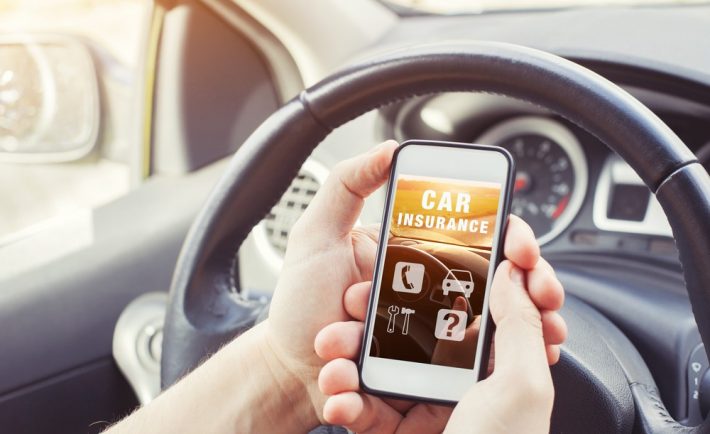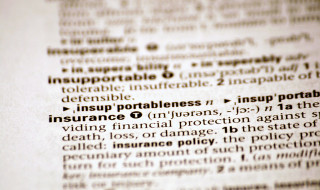
Whatever your reason may be for buying yourself a car, you should take out car insurance immediately afterward. After all, you wouldn’t want to face legal repercussions for driving without any car insurance. But if it’s your first time to purchase car insurance, it’s easy to do it wrong, especially with so many insurance companies out there offering protection for both your car and your finances. To make taking out car insurance easier for you, here are some key tips to consider:
1. The state where you’re residing would require you to purchase third party cover as a bare minimum
There’s no telling at all when your car might accidentally hit a person or a piece of property no matter how defensive you are with your driving. The person your car hit might get injured or even die. The piece of property that your car had crashed into might become unusable or beyond repair.
Worse, the entire balance of your savings account might not be enough to cover the medical or funeral costs of the person that your car had hit. It might also not be enough to cover the repair or replacement costs of the property that your car has damaged. As a result, most states would require you to buy third party cover as part of the car insurance that you’ll be taking out from your chosen provider.
Unfortunately, third party cover won’t be able to shoulder any damages that your car had sustained as it only covers costs associated with a person or piece of property that your car had hit.
While not a state requirement, you might want to purchase comprehensive cover as well.
On the other hand, if you want any damages that your car had sustained shouldered by your chosen insurance provider, you should buy comprehensive cover instead. This will help with any repair costs associated with your damaged car.
Your car insurance’s comprehensive cover can also act as a third-party cover since the former allows for a wider coverage compared to the latter as evident in its name. The said type of cover can also shoulder you financially in case your car is consumed by fire, stolen, or hijacked.
You might want to include some extra features on top of the car insurance that you’re planning to take out.
Having a third party or comprehensive cover might not be enough once you take out car insurance as it might not sufficiently cover any highly specific damages that your car may sustain at any given time. Thus, you might want to have some extra car insurance features so that you can still get protected no matter what unfortunate situation might happen to your car. Some of those additional features that you can consider including in your car insurance are as follows:
- Windscreen cover – useful for when your car’s windshield, side windows, or rear window gets broken or cracked, and you want to recover the cost of having any of them either repaired or fully replaced
- Fire and theft cover – as the name implies, useful in case your car either gets burnt to a crisp by fire, stolen by burglars, or hijacked and you haven’t taken out comprehensive cover as part of your car insurance policy
- Zero depreciation cover – aims to add value to your car insurance’s comprehensive cover by excluding costs associated with your car’s depreciation in value due to age, wear and tear, etc.
You might want to consider looking into other types of car insurance coverage as well.
As both third party and comprehensive cover of your car insurance might not be enough to help you financially, you might want to consider including the following additional types of car insurance coverage in your car insurance:
- Collision coverage – covers repair costs associated with your car after you’ve gotten involved in an accident with another driver regardless if the said incident was your fault or theirs, though you’ll want to add this one only if you’ve bought your car new and not used
- Uninsured and underinsured motorist protection – useful if an uninsured or underinsured driver had hit your car since they’re unable to pay any repair costs associated with it but you wouldn’t want to pay those costs out of your pocket at the same time
- Personal injury protection – Pays for all medical expenses and lost wages that you or any passengers that you’ve brought along with you in your car would incur after you’ve gotten involved in an accident
The amount of your car insurance premiums depends on the amount of risk that you’re posing to your chosen insurance provider.
Your car insurance premium is the amount of money that you’ll have to pay for the car insurance that you’ll be taking out from your chosen provider. How much your car insurance premium will amount to is proportional to the degree of risk that you’re carrying with you as a driver.
Your chosen car insurance provider would gather information about you including but not limited to your age, criminal record, and residence’s location to determine the degree of risk that you’re posing to them. The higher the risk that you’re posing to your chosen provider, the more expensive your car insurance premium would get.
Thus, if you want to pay an affordable car insurance premium amount, you’ll have to lessen your degree of risk.
Ask your chosen provider if the car insurance would cover you in certain situations other than driving your car or not.
There might be some situations where your car had gotten involved in an accident, but you weren’t the one behind the wheel at the time when the incident had occurred. Or you might have been driving somebody else’s car or a rental vehicle when you’ve gotten involved in an accident.
In cases such as this make sure the provider covers this prior to taking out the insurance to make sure you’re fully covered.
- Pay your car insurance premium either as a lump sum or in installments depending on how much money you’re willing to give to your chosen provider.
As already mentioned earlier, the money that you’ll pay is known as a premium. You can pay your car insurance premium in one go covering an entire year and even get a discount from your chosen provider while at it. But if that’s too heavy of a financial burden to you, you can pay your car insurance premium in two, four, or 12 installments instead. However, you should take note that the higher the number of installments, the higher the additional fees that you’ll have to pay as well aside from your car insurance premium amount.
- When the policy period expires, they’ll automatically renew it unless it isn’t eligible for renewal anymore.
Right now, there’s no such thing as multi-year car insurance. In fact, the longest car insurance policy period is only a year followed by six months and one month. However, car insurance with a policy period of only one month is usually reserved by providers only for those drivers that they’ve assessed as high-risk. Thus, the car insurance that you’ll be taking out from your chosen provider may have a policy period of either six months or one year.
Once your car insurance’s policy period comes to an end, your provider would automatically renew it, especially as your car insurance is most likely to have an auto-renewal clause included in it. But if your provider didn’t automatically renew your car insurance’s policy period either because you’ve become a high-risk driver or you’ve moved to a different state, you’ll have to take out car insurance from another provider instead.
Conclusion
All 50 states in the U.S. require every car driver passing by the nation’s roads to carry car insurance. Thus, unless you want to break federal and state laws, you should look into car insurance after successfully purchasing a car. However, as you may be clueless about buying car insurance, the above-listed key tips to consider should make taking one out an effortless process for you. After all, better safe than sorry.




